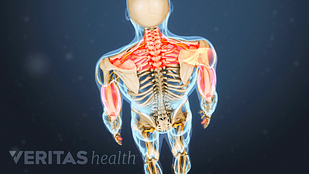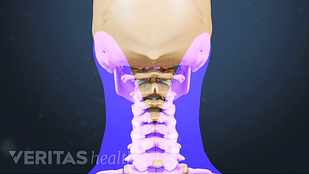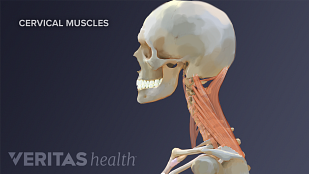In This Article:
- Understanding Neck Spasms
- What Causes Neck Spasms?
- Neck Spasms Animation
Video Transcript
颈部痉挛,也referred to as a cramp, involves the muscle strongly contracting without relaxing again. A neck spasm can also feel like a muscle twitch in which the muscle rapidly contracts and relaxes over and over.
While the exact mechanisms for how neck spasms develop are not well understood, they are commonly thought to be caused by either the muscle trying to protect itself or receiving altered motor signals.
For example, an injured muscle may contract to prevent further tear. This way, the muscle protects itself from further injury due to strain or overuse.
Underlying spinal conditions that can contribute to neck spasms include herniated disc, osteoarthritis, and any other condition that causes inflammation, spinal instability or mechanical dysfunction.
A muscle can also receive altered motor signals because of an abnormality in the nerve pathways or brain. Potential examples include stress, anxiety, peripheral neuropathy1, or cervical dystonia2.
Common symptoms can involve:
- Constant or throbbing neck pain
- Stiff neck or reduced range of motion
- Referred pain to the head or shoulder
Most neck spasms go away within a few minutes or hours. For neck spasms that persist or recur, visit a qualified health professional for an accurate diagnosis and treatment plan.
References
- 1.Peripheral Neuropathy Fact Sheet. National Institutes of Health, National Institute of Neurological Disorders and Stroke.https://www.ninds.nih.gov/Disorders/Patient-Caregiver-Education/Fact-Sheets/Peripheral-Neuropathy-Fact-Sheet. Accessed January 10, 2020.
- 2.Cervical Dystonia. National Organization of Rare Disorders (NORD).https://rarediseases.org/rare-diseases/cervical-dystonia. Accessed January 10, 2020.






